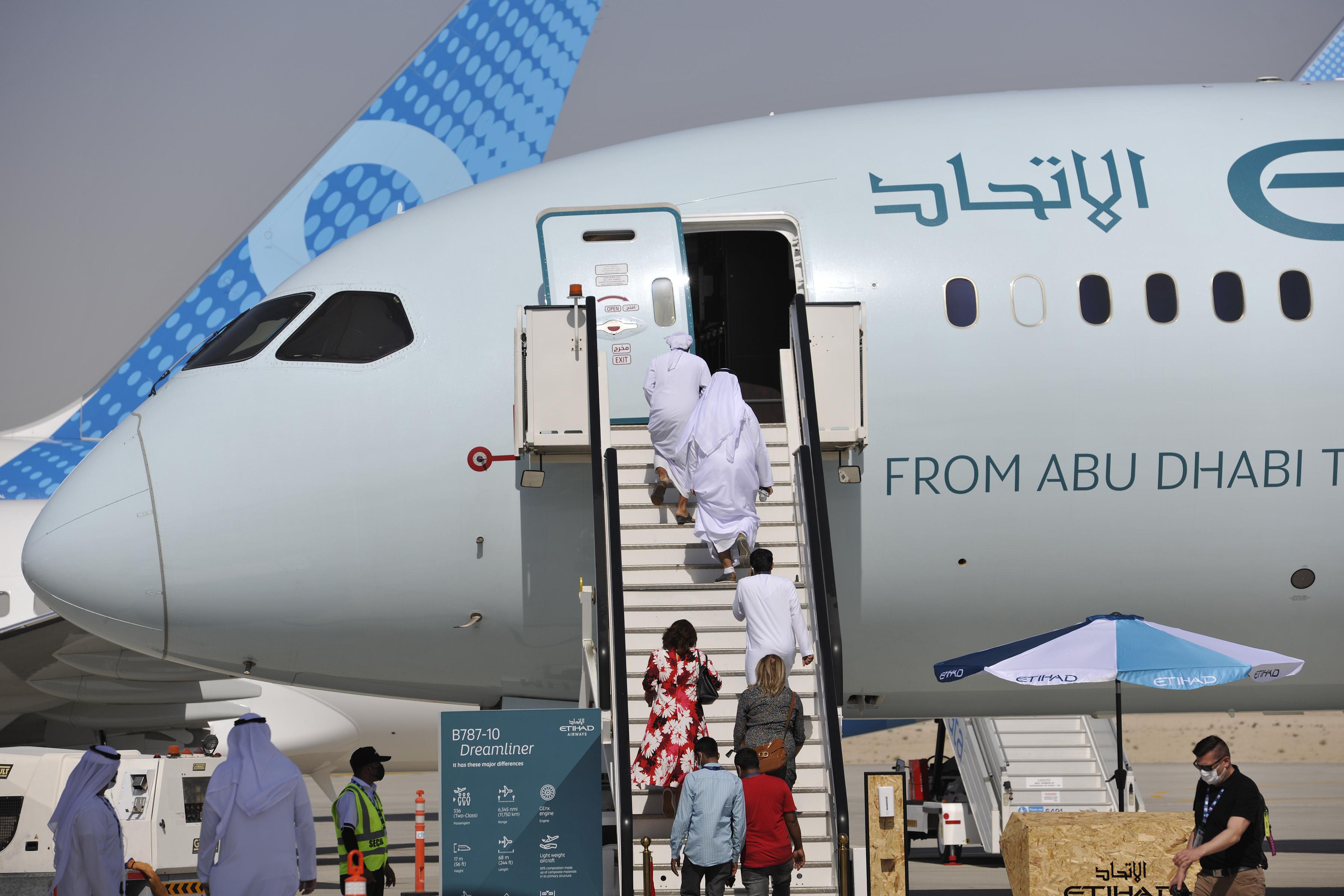
DUBAI—Last month Etihad Airways operated its most sustainable operation yet, achieving a 72% reduction in carbon emissions on a specially organized London-to-Abu Dhabi flight using the airline’s Boeing 787-10 “Greenliner.”
But the saving—which was compared against a routine flight on the same route with a four-engined A380 using conventional fuel and standard procedure routings—could have been even more had the airline been able to load more sustainable aviation fuel (SAF), says Etihad CEO Tony Douglas.
The flight used a blend of 38% SAF. “Some of you are thinking that’s probably the function of some sophisticated computer algorithm that came up with the optimum plan,” Douglas said Nov. 15 at Dubai Airshow. “Sadly, that’s not the reason. We could only get 38% and there was no sophistication in it. And it's three-times more expensive [than conventional jet fuel] and at Heathrow it didn't all end up all in our aircraft—it got put into the fuel farm. You get a credit for it because the infrastructure is not available at this moment in time to deliver it to the aircraft.”
Speaking at the air show’s panel session on the UAE’s commitment to sustainability, Douglas added: “We are all in the early stages of SAF and the principal challenges are to do with availability—as a consequence of the low level of supply the pricing is simply unaffordable.” He urged policy setters and regulators to do more to establish price parity and provide incentives to fuel producers. “Until [production] scales up and pricing comes down then the availability of the broad distribution infrastructure for SAF will always be a challenge,” Douglas said.
Julie Kitcher, executive vice president of communications for Airbus, added: “Although aircraft today are certified to be able to take up to a 50% drop-in SAF, the reality is it's well below 1% due to a lack of availability and a lack of scalability. So, we need really to develop the ecosystem, the regulatory system and accessibility using our energy providers to be able to create SAF at scale. So we need a growing availability of biomass and biofuels, and we also need to develop the hydrogen pathways. And it's not a case of sustainable aviation fuel or hydrogen: it's SAF and hydrogen.”
Kitcher added: “We'll be able to use hydrogen for combustion from 2035 in our emissions-zero commercial aircraft and also to develop a wider availability of synthetic fuels with power to liquid technology using carbon removal technology as well.”
Boeing Chief Sustainability Officer Chris Raymond also emphasized that both SAF and hydrogen are equally key to the long-term future of sustainable commercial aviation. “When we get to renewable energy, I think this is where a lot of people make the make the argument that Boeing and Airbus are saying different things. I like to say we're putting a bit of our emphasis in different places. We’re both saying the same things: Sustainable aviation fuel—they [Airbus] know it and we [Boeing] know it—is critical to drop-in [fuel] and helping to reduce carbon emissions.”
Equally, he says Boeing is studying hybrid-electric, all-electric and hydrogen power options. “We have built and flown and are flying an all-electric airplanes—we’ve flown over 1,500 times,” Raymond said, referring to the electric-vertical-take-off-and-landing (eVTOL) concepts developed by Boeing/Kitty Hawk joint company Wisk. “We've flown five different airplanes on some form of hydrogen, hydrogen fuel cells, liquid hydrogen and hydrogen that was green that we used satellite solar cells to actually produce. So, we're involved in hydrogen and how it might apply to the industry as well. So we're kind of both saying the same thing, but we're putting our emphasis maybe in a little different places sometimes.”
